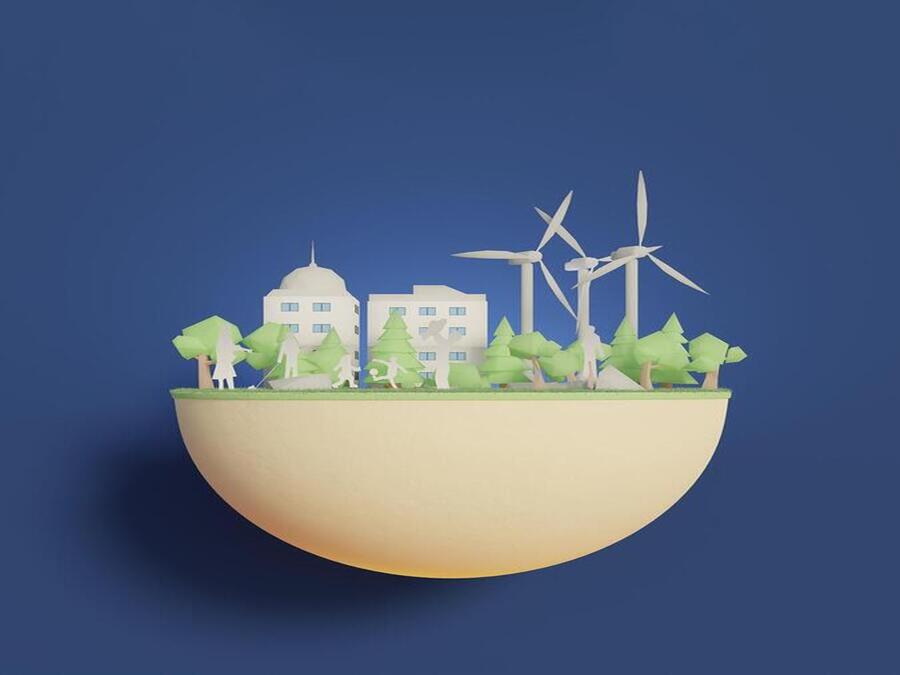Power: Sustaining The Future
The global energy order is transforming toward reducing fossil fuels’ percentage of global consumption from 80% to 60% by 2050, with the intention of eliminating waste while stimulating more sustainable operations.
Fossil fuel energy is a major source of greenhouse gas emissions, and energy security is a worldwide issue. The main source of climate change is fossil fuels, which must be significantly reduced by 2030 and completely eliminated by 2050 to lessen its extreme impacts.
To do this, we must reduce our dependency on fossil fuels and make investments in clean, easily available, reasonably priced, sustainable, and dependable substitution of energy sources. Numerous renewable energy sources that are replenished naturally and emit little to no greenhouse emissions include the sun, wind, water, waste, and heat from the Earth.
The World Nuclear Association’s Net Zero by 2050 study aims to create a worldwide energy roadmap with substantially enhanced nuclear energy output and zero emissions by the latter part of the century between 2020 and 2050, reducing fossil fuels’ share from 80% to 60% by 2050, and lowering CO2 emissions from 37 billion tones to 32 billion tones by 2050.
Climate change is accelerating the transition from fossil fuel-generated power to nuclear power, with India and China outpacing European and American countries. By 2030, China plans to significantly increase its nuclear power capacity by employing advanced Western designs.
The Modi government plans to boost India’s nuclear power capacity from 6780 Mega Watt electric to 22,480 Mega Watt Electric by 2031, potentially accounting for up to 9% of the country’s power. Applying more pressure to pro-climate measures will enable them to reach the finish line sooner. The supply chains for vital technologies like electrolyzes, solar PV, and batteries are operating at full capacity. The extremes of energy sources found in Scandinavia include dance floors, body heat, jellyfish, and booze that has been seized. Engineers in Stockholm have worked their magic to capture the body heat of the more than 2,500 commuters that pass through Central Station every day. This body heat is directed through the station’s vent system, where it warms water stored in subterranean tanks and is then released back into the surrounding office building’s heating system. The entire process only came to $30,000. Energy floors are present in Rotterdam, where the dance floor’s kinetic energy is transformed into electricity to light up the surface.
Future EVs will be powered by hydrogen, which can be derived from trash. The next big thing could be producing clean hydrogen fuel from sewage gas. Biogas, is a lower intensity fuel that India has already successfully used in this manner.
Fusion as a Substitute for Fission
Huge amounts of energy are released when two or more atomic nuclei fuse together to produce a single heavier nucleus. This process is known as nuclear fusion. Nuclear fission is used in conventional nuclear reactors to produce energy. The task is to use fusion to produce carbon-free energy for homes and businesses. The advantages of nuclear fusion over fission are endless fuel supply and low cost due to its extraction from seawater. It produces no greenhouse gases, therefore green men and women will adore it. If the reactor is destroyed, the fusion process will automatically stop. The beneficial news is that the one and only gas produced by nuclear fusion is helium, which is non-radioactive.
An Aqueous Solution
AEM electrolysers are used by Germany-based startup Enapter to create hydrogen from seawater using renewable energy. The procedure only requires 2.4 liters of water, which is eight times less than what a dishwasher uses and half of what a toilet flushes. Because AEM electrolysers are fast and inexpensive, they are used to power residential heating appliances, automobiles, and airplanes.
Exceptional Power Source
Long-term battery longevity and rapid charging are two of the green energy sector’s top priorities. Supercapacitors, which have two electrical conductors divided by an insulating layer and provide faster charging, more effective energy distribution, and longer battery life without compromising performance, have been invented by Swedish researchers.
Here are four justifications for why quickening the switch to clean energy is the best approach to ensure that future generations can live on a healthy world.
Ample Renewable Energy Sources Nearby
Because countries depend on fossil fuels, about 6 billion people globally are susceptible to geopolitical catastrophes. However, 90% of electricity could come from renewable energy sources by 2050, and these sources are accessible everywhere. These resources have the power to diversify economies, fend off price swings, promote equitable growth, provide employment, and reduce poverty.
Renewable Energy Costs Less
Globally, renewable energy is the least expensive power source, and as costs decline, it becomes increasingly appealing, particularly for low- and middle-income nations. 90% of the power industry could be carbon-free by 2050 and 65% of the world’s electricity supply could come from renewable sources by 2030. In 2022 and 2023, the cost of solar and wind power does not decrease; however, the cost of gas and coal climbs more sharply, making these sources more competitive.
Renewable Energy is Healthier
According to the World Health Organization, approximately 13 million people die each year from breathing air that is overly polluted, which affects 99% of people on the planet. Burning fossil fuels resulted in health and financial expenses of $2.9 trillion in 2018. Changing to cleaner energy sources can aid in the fight against global warming.
Jobs are Created By Renewable Energy
By 2030, net-zero emissions could result in a net gain of 9 million jobs in the energy sector, with 14 million new jobs in clean energy and 16 million workers in energy-related industries. A just transition is crucial to ensure no one is left behind. According to the International Energy Agency (IEA), the employment created by investments in renewable energy equals three times more than that of the fossil fuel sector.
Featured Image:
Source:
- https://www.researchnester.com/reports/on-site-photovoltaic-solar-power-for-data-centers-market/5583
- https://www.mdpi.com/2077-1312/11/1/203
- https://www.bitsathy.ac.in/blog/power-fuelling-the-future/

